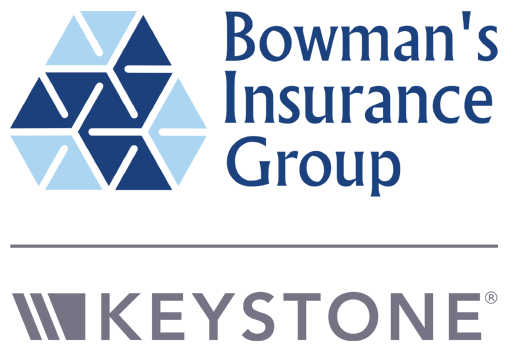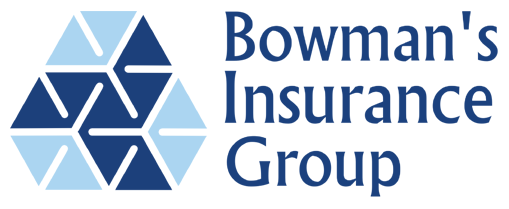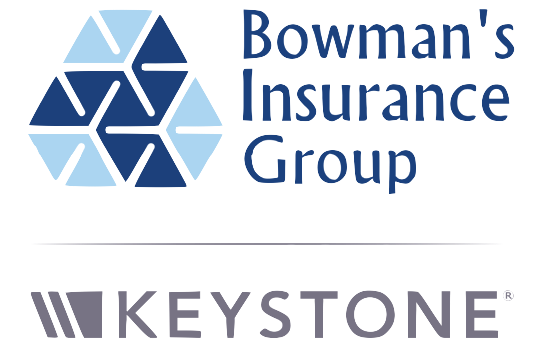Pennsylvania Architect & Engineer Errors & Omissions Insurance

See How We're Different:
Call Us: 717-838-5464
Top 3 Recommended Policies
Index
Understanding Errors & Omissions Insurance for Architects & Engineers
Current Market Trends Impacting Pennsylvania A&E Insurance
Emerging Risks: The Impact of Artificial Intelligence on Claims
How to Navigate E&O Insurance in Pennsylvania
Conclusion: The Importance of E&O Insurance for Pennsylvania A&E Professionals
Contact Us
For architects and engineers working in Pennsylvania, securing the right Errors & Omissions (E&O) insurance is more critical than ever. With the increasing complexity of construction projects and rising claim costs, understanding how E&O insurance protects design professionals against financial losses stemming from alleged errors or omissions is essential. This comprehensive guide will explore the current landscape of the Pennsylvania A&E insurance market, key risks facing professionals, and practical insights to help firms navigate coverage challenges effectively.
As the A&E insurance market continues to evolve, it is important to stay informed about trends influencing premiums, claims severity, and emerging risks such as those related to artificial intelligence. According to recent industry data, 82% of insurers reported premium growth in the A&E insurance market in 2024, with nearly 29% experiencing growth between 11-15% (riskandinsurance.com). This upward trend underscores the increasing caution insurers are exercising amid rising claim costs and complex project demands.
Understanding Errors & Omissions Insurance for Architects & Engineers
Errors & Omissions insurance, often called professional liability insurance, is designed to protect architects and engineers from claims alleging negligence, errors, or omissions in the performance of their professional duties. Unlike general liability insurance, which covers bodily injury or property damage, E&O insurance specifically addresses financial losses resulting from design defects, miscalculations, or failure to meet professional standards.
In Pennsylvania, where construction projects range from urban developments to infrastructure improvements, the stakes are high. Defective plans or specifications can lead to costly delays, structural failures, or safety hazards. Without proper E&O coverage, design professionals may face significant legal expenses and damages that could jeopardize their business.
Moreover, a landmark 2005 Pennsylvania Supreme Court decision permits general contractors to sue architects directly for economic losses caused by defective plans (constructionrisk.com). This ruling increases the exposure architects face, making robust E&O insurance even more vital to protect against direct legal actions.
In addition to legal protection, E&O insurance can enhance an architect's or engineer's credibility in the eyes of clients and stakeholders. Clients often seek professionals who can demonstrate a commitment to quality and risk management. By securing E&O coverage, architects and engineers not only safeguard their financial interests but also signal to potential clients that they take their responsibilities seriously and are prepared for unforeseen challenges. This proactive approach can be a significant differentiator in a competitive market, helping to build trust and foster long-term relationships.
Furthermore, the scope of E&O insurance can vary significantly based on the specific needs of the professional. Some policies may include coverage for defense costs, settlement fees, and even damages awarded in lawsuits. It is essential for architects and engineers to carefully assess their individual practices and the types of projects they undertake to select a policy that adequately addresses their unique risks. Engaging with an insurance broker who specializes in professional liability can provide valuable insights and help tailor coverage to fit the evolving landscape of the construction industry.

Current Market Trends Impacting Pennsylvania A&E Insurance
The A&E insurance market in Pennsylvania reflects broader national trends characterized by premium growth and heightened caution among insurers. In 2024, more than four out of five insurers reported premium increases, with a significant portion facing double-digit growth rates. This is driven largely by escalating claim severity and the complex nature of contemporary construction projects.
Claim severity is a growing concern. In 2024, 53% of insurers noted higher claim severity compared to 41% in 2023, signaling that claims are not only more frequent but also more costly (riskandinsurance.com). Structural engineering claims, in particular, are cited as the most severe by 82% of insurers surveyed, followed by civil engineering at 59%, and architecture at 47% (insurancejournal.com). This data highlights the need for firms specializing in these disciplines to carefully evaluate their coverage limits and risk management practices.
Additionally, insurers are adopting a more selective approach to underwriting. According to a survey by Ames & Gough, 75% of insurers plan to increase rates for accounts with adverse loss experience, and 56% are targeting firms involved in higher-risk projects for rate hikes (insurancejournal.com). This means that Pennsylvania architects and engineers working on complex or high-profile projects should anticipate premium adjustments and prepare to demonstrate strong risk controls.
Moreover, the evolving regulatory landscape is also influencing the A&E insurance market. With new building codes and safety regulations being implemented, firms must stay abreast of compliance requirements to avoid potential liabilities. Insurers are increasingly scrutinizing a firm's adherence to these regulations during the underwriting process, which can impact both coverage options and premium costs. As a result, firms that proactively invest in compliance training and risk management strategies are likely to find themselves in a more favorable position when negotiating their insurance terms.
Furthermore, the rise of technology in construction and design is reshaping the risk profile of projects. The integration of advanced software, Building Information Modeling (BIM), and other digital tools has improved efficiency but also introduced new vulnerabilities. Cybersecurity risks, in particular, are becoming a significant concern for insurers, as breaches can lead to substantial financial losses and legal repercussions. As such, firms are encouraged to implement robust cybersecurity measures and consider cyber liability coverage as part of their overall insurance strategy to mitigate these emerging risks.
Emerging Risks: The Impact of Artificial Intelligence on Claims
One of the most notable emerging risks in the A&E insurance sector is the increasing use of artificial intelligence (AI) in design and planning processes. While AI offers opportunities for enhanced efficiency and innovation, insurers are closely monitoring how its adoption might affect future claims.
Recent reports indicate that 76% of insurers are actively tracking AI’s impact on claims within the A&E market (riskandinsurance.com). Industry experts warn that outdated or incorrect designs stored in AI libraries could lead to repeated errors or code violations, potentially increasing the frequency and severity of claims.
This evolving landscape presents a challenge for Pennsylvania design professionals. Firms must balance leveraging AI tools with rigorous quality control and validation processes to mitigate risks. Insurers may also require enhanced disclosures about AI use during underwriting, affecting coverage terms and premiums.
Furthermore, the integration of AI into project workflows introduces a new layer of complexity in risk assessment. As AI systems learn from vast datasets, the potential for biases in decision-making becomes a pressing concern. For instance, if an AI model is trained on historical data that reflects past prejudices or errors, it may inadvertently perpetuate these issues in future designs. This could lead to significant liabilities if the resulting projects fail to meet safety standards or regulatory requirements.
Moreover, the rapid pace of technological advancement means that regulations may struggle to keep up with AI developments. Insurers and design firms alike must stay informed about evolving legal frameworks surrounding AI usage. This includes understanding intellectual property rights related to AI-generated designs and the implications of data privacy laws, which can vary significantly across jurisdictions. As these factors intertwine, the insurance landscape will need to adapt, ensuring that policies not only cover traditional risks but also address the unique challenges posed by AI integration.
How to Navigate E&O Insurance in Pennsylvania
Given the dynamic nature of the A&E insurance market, Pennsylvania architects and engineers should adopt a proactive approach to securing and managing their E&O policies. Here are key considerations:
Assess Your Risk Profile Thoroughly
Understand the specific risks associated with your discipline and project types. Structural engineers, for example, face higher claim severity, so coverage limits and deductibles should reflect this reality. Firms working on high-risk or complex projects may also encounter higher premiums and stricter underwriting. Additionally, it is essential to regularly review and update your risk assessments as project scopes change or as new technologies are integrated into your work. By staying ahead of potential risks, you can better tailor your E&O insurance to meet the evolving landscape of your projects.
Maintain Strong Documentation and Quality Controls
Comprehensive record-keeping and rigorous quality assurance can reduce the likelihood of claims and demonstrate professionalism to insurers. This is particularly important as insurers scrutinize loss histories and project details when determining rates. Implementing a robust project management system that tracks communications, design changes, and client approvals can serve as a valuable defense in the event of a dispute. Furthermore, regular internal audits of your processes can help identify areas for improvement, ensuring that your firm adheres to the highest industry standards and minimizing potential liabilities.
Stay Informed About Legal Developments
Awareness of court rulings, such as the Pennsylvania Supreme Court’s allowance for direct contractor lawsuits against architects, is crucial. Such legal precedents can increase exposure and influence insurance requirements. Keeping abreast of legislative changes and industry regulations can also help you anticipate shifts in the legal landscape that may affect your practice. Subscribing to industry newsletters, attending legal seminars, and participating in professional associations can provide valuable insights into emerging legal trends and their implications for your E&O coverage.
Engage with Experienced Insurance Brokers
Working with brokers who specialize in A&E insurance can help firms navigate market complexities, negotiate favorable terms, and identify coverage gaps. Brokers can also provide insights on emerging risks like AI and evolving industry standards. They often have access to a wide range of insurers and can leverage their relationships to secure the best possible rates and terms for your firm. Additionally, brokers can assist in tailoring your policy to include endorsements for specific services or projects, ensuring that you are adequately protected against unique risks that may arise in your practice.

Conclusion: The Importance of E&O Insurance for Pennsylvania A&E Professionals
Errors & Omissions insurance is an indispensable safeguard for architects and engineers in Pennsylvania. With the A&E insurance market experiencing premium growth, rising claim severity, and new challenges such as AI-related risks, design professionals must prioritize securing adequate coverage tailored to their unique exposures.
By understanding current market trends, legal implications, and emerging technologies, Pennsylvania architects and engineers can better protect their practices and reputations. Staying informed and working closely with knowledgeable insurance partners will ensure that firms remain resilient amid an increasingly complex risk environment.
For those seeking further insights on the evolving A&E insurance landscape, resources such as
Ames & Gough’s industry analysis provide valuable data and expert perspectives to guide decision-making.



